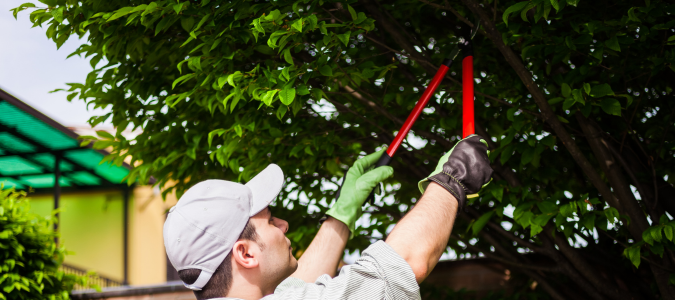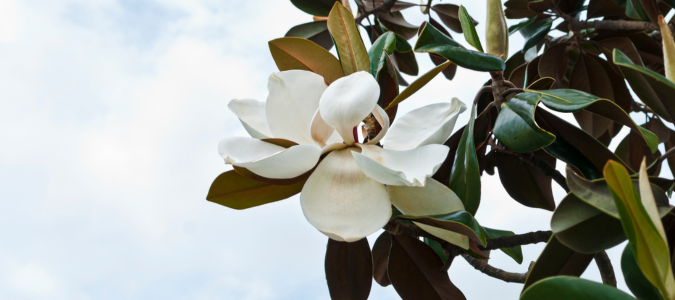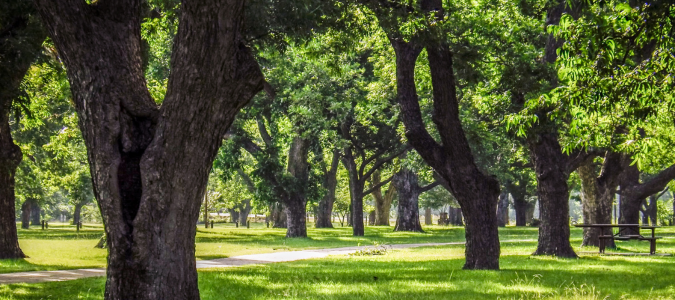As a homeowner, you know that proper tree maintenance is important to having a beautiful and healthy property. However, do you know the different techniques required to maintain your trees?
Many homeowners confuse or interchange the concepts of tree pruning and trimming. However, they are two different things with different purposes and outcomes.
Working with an arborist is the best way to maintain your trees’ beauty and vitality. They have the right tools and knowledge to trim or prune your trees without damaging them.
Tree Pruning Versus Trimming
Do you know the difference between tree pruning and trimming your trees? While both tree maintenance methods are similar, they have different purposes.
Trimming primarily refers to an immediate need to be addressed and is usually only in reference to one specific or a few branches. Examples of trimming include removing a broken branch, trimming low hanging branches over a sidewalk and trimming back the end of a branch that is making contact with a structure.
On the other hand, pruning refers to a more specific goal. This could include removal of dead, diseased, rubbing and dead branches as well as some live material. The goals of pruning can vary based on what outcome you are looking to achieve.
The majority of pruning practices are for structural health as well as safety and mitigation of damages during nontypical weather events. Other examples would include shaping of the canopy edges, pruning for fruit production or pruning for view purposes.
Pruning properly will encourage new growth and redirect energy to branches that remain increasing vitality.
The Benefits of Tree Pruning
There are several benefits to pruning your trees, including enhancing your tree’s health by removing damaged and diseased branches. Removing these branches will help prevent the tree’s disease from spreading to other parts of your tree.
Next, pruning your trees can also promote new growth. Once the damaged branches are removed, the tree can redirect its energy to growing healthier branches. Additionally, pruning can revitalize dormant buds.
Pruning trees can also improve their structure, which impacts their long-term health. Removing heavy, diseased branches can prevent trees from leaning or breaking. Maintaining a strong tree structure in the event of a storm or strong winds is especially helpful.
Lastly, while the main goal of tree pruning is to improve the health of your tree, pruning can also have some aesthetic benefits. By pruning off damaged branches, you can shape your tree to make it more visually appealing.
If you think your tree has diseased or damaged branches, it might be time to prune it. However, consult with a lawn care specialist before taking action. An expert can identify the diseased branches and create a plan to remove them.
The Benefits of Tree Trimming
Tree trimming’s main purpose is to improve aesthetics and functionality. By trimming your trees, you can control their size and shape to match the look of the rest of your landscape.
Additionally, you can enhance the safety of your property by trimming overgrown branches that obstruct walkways or driveways. It’s also important to know how far trees should be from a house. Tree trimming can also preserve the views from your property. Trimming your trees can promote new flower growth or fruit production when done strategically.
Contact a lawn care specialist if your trees are ready for a trim. A specialist can achieve your aesthetic goals while also considering the functionality of your lawn. Both tree pruning and tree trimming are tasks that are best left to a professional arborist who can properly care for your trees.
How to Trim a Magnolia Tree
Magnolia trees are staples of the south, and they are beloved for their beautiful white blossoms and velvety green leaves. They also take on a graceful shape. However, proper tree trimming is necessary to maintain your magnolia tree’s form.
Trimming your magnolia tree also helps to maintain its vitality and longevity. Before you can get started, it’s important to note that there are two categories of magnolia trees, and each category includes several species that require varying maintenance routines.
Deciduous Magnolia Tree
The first category is the deciduous magnolia tree, which covers species that are native to the east coast, such as the saucer magnolia tree. Saucer magnolias are smaller than other species, and their flowers are pink.
Deciduous magnolia trees shed their leaves in the fall and go dormant for the winter months before blooming in the early spring. The best time to trim deciduous magnolia trees is in the spring once they have finished flowering and before new growth begins.
Evergreen Magnolia Tree
The other category of magnolia trees is the evergreen magnolia, which includes the southern magnolia species. Evergreen magnolias are native to the southeastern states, and southern magnolias are large trees that produce beautiful white flowers.
Unlike the deciduous magnolia trees, evergreen magnolia trees grow throughout the year. Instead of dropping their foliage, these trees remain lush throughout the fall and winter months, and may even produce some flowers.
However, evergreen magnolias produce the most flowers in the late spring or early summertime. The best time to trim them is during the late winter or early spring before their big blooming season.
Tips For Trimming Magnolia Trees
The main difference between trimming deciduous magnolia trees and evergreens is when to trim them. Beyond the timing, these basic tree trimming tips apply to both types of magnolia trees.
- Start by inspecting your tree for dead or damaged branches and remove those first.
- Remove any overcrowded branches. Doing so will improve air circulation and allow sunlight to penetrate the tree more effectively, which can reduce fungal disease and improve the overall health of your tree.
- Branches removed should always be cut at the attachment point on the parent branch. Avoid leaving stubs.
- Next, be careful not to over-trim your magnolia trees to ensure that they maintain their elegant shape. Additionally, over-trimming can weaken the tree and make it more susceptible to diseases. You should never remove more than 25% of live branches.
For the best outcome, enlist the help of a tree care specialist to trim your magnolia trees. In the south, magnolia trees are prized possessions, and it’s important to care for them properly to maintain their beauty and vitality. An expert will know exactly when, how and where to trim your magnolia trees to accomplish your health and aesthetic goals.
Pruning a Pecan Tree: The Basics
Pecan trees are another beloved tree species in the south. Not only do they produce delicious pecans, but they are beautiful trees that provide a large canopy of shade and can make a statement on any lawn.
Pruning a pecan tree is essential to keeping it healthy and visually appealing; however, it’s important to prune it at the right time of year. Pecan trees go dormant in the winter and early spring, which is the best time to prune them.
You want to prune your pecan tree before the new growth begins in late spring to minimize stress on the tree and give it time to heal before the growing season.
To prune a pecan tree, remove dead, decaying or diseased branches. Next, thin out the tree by removing over-crowded branches. As mentioned above with magnolia trees, thinning out your trees improves air circulation and access to sunlight.
The third step is to form your tree until it takes on your desired shape and size. You should also clear away any branches that obstruct pathways or create other safety hazards.
If you want to promote fruit production, make sure you maintain a balance between fruiting wood and vegetative growth. Additionally, use sharp tools so that you can make clean cuts and avoid damaging the tree. Do not leave stubs or jagged cuts on the tree as they are attractive to pests.
Working with a lawn care specialist is the best way to ensure the health, beauty and fruit production of your pecan tree. An expert will have the best pruning tools and expertise. Plus, they will know the right time of year to prune your trees and how to prune them in a way that promotes fruit growth.
Work With a Lawn Care Specialist to Maintain Your Trees
Pruning and trimming your trees has several aesthetic, health and safety benefits. However, the most important thing to keep in mind is that both tasks are best left to a professional. An arborist will use the best tools and techniques to maintain your trees and ensure they live long and healthy lives.
Additionally, an expert can identify tree disease and advise you on the next steps to bring your tree back to life. Contact your local tree care provider to schedule an appointment to inspect your trees.
ABC Can Keep Your Trees Healthy
There can be a lot involved with taking care of trees. For healthy, happy trees, contact ABC Home & Commercial Services. Our certified arborists will ensure that your trees grow strong and beautiful. Our tree services include trimming, fertilization and tree air excavation. They can trim many trees, including crape myrtle trees.



